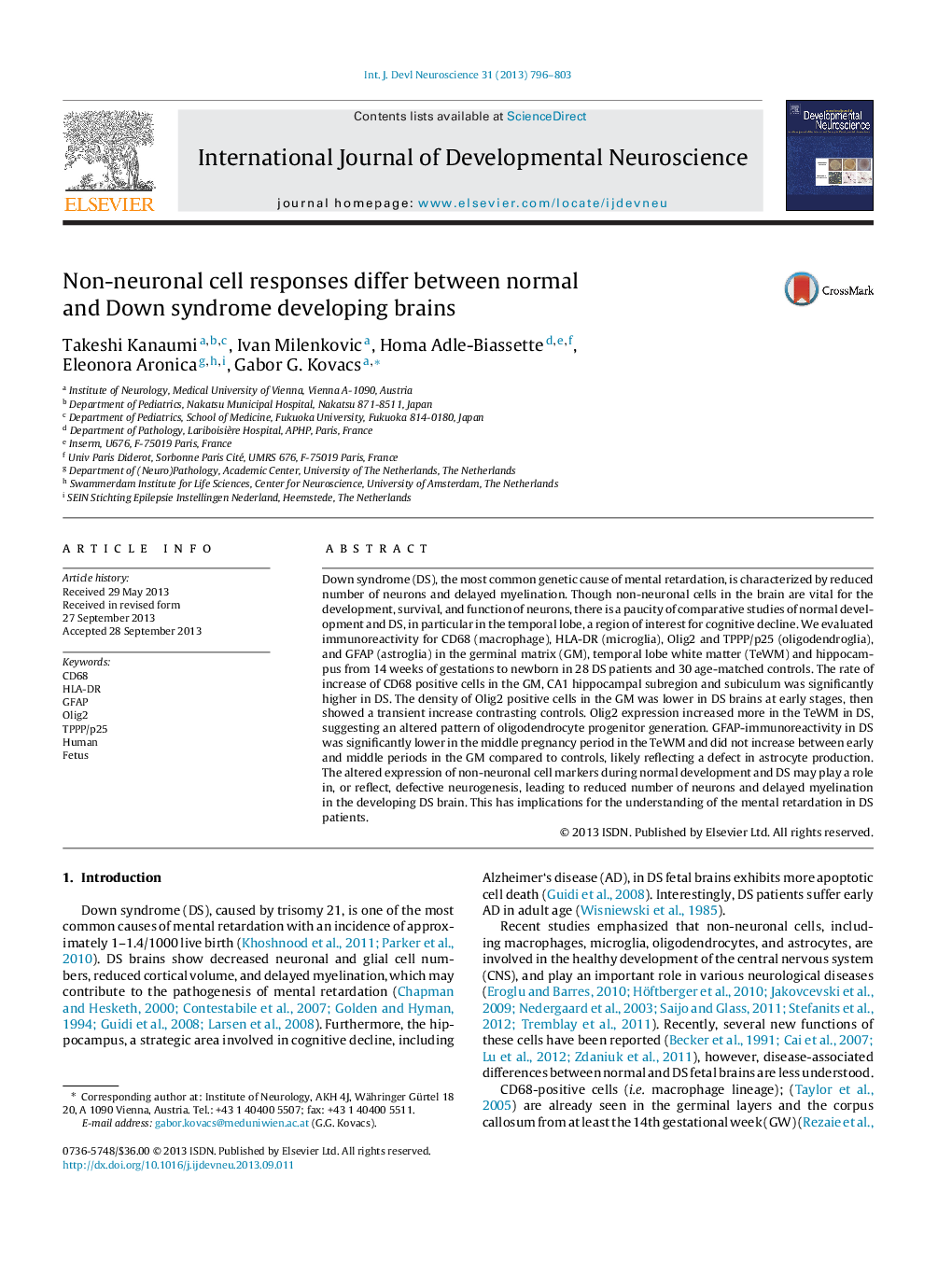| Article ID | Journal | Published Year | Pages | File Type |
|---|---|---|---|---|
| 2786160 | International Journal of Developmental Neuroscience | 2013 | 8 Pages |
•We compare non-neural cell responses in normal and Down syndrome developing brains.•The rate of increase of CD68 immunoreactive cells is higher in Down syndrome.•The number of Olig2+ cells differs in normal and Down syndrome developing brain.•GFAP immunoreactivity is lower in Down syndrome in the white matter in development.•Altered cell responses may lead to defective neurogenesis in Down syndrome.
Down syndrome (DS), the most common genetic cause of mental retardation, is characterized by reduced number of neurons and delayed myelination. Though non-neuronal cells in the brain are vital for the development, survival, and function of neurons, there is a paucity of comparative studies of normal development and DS, in particular in the temporal lobe, a region of interest for cognitive decline. We evaluated immunoreactivity for CD68 (macrophage), HLA-DR (microglia), Olig2 and TPPP/p25 (oligodendroglia), and GFAP (astroglia) in the germinal matrix (GM), temporal lobe white matter (TeWM) and hippocampus from 14 weeks of gestations to newborn in 28 DS patients and 30 age-matched controls. The rate of increase of CD68 positive cells in the GM, CA1 hippocampal subregion and subiculum was significantly higher in DS. The density of Olig2 positive cells in the GM was lower in DS brains at early stages, then showed a transient increase contrasting controls. Olig2 expression increased more in the TeWM in DS, suggesting an altered pattern of oligodendrocyte progenitor generation. GFAP-immunoreactivity in DS was significantly lower in the middle pregnancy period in the TeWM and did not increase between early and middle periods in the GM compared to controls, likely reflecting a defect in astrocyte production. The altered expression of non-neuronal cell markers during normal development and DS may play a role in, or reflect, defective neurogenesis, leading to reduced number of neurons and delayed myelination in the developing DS brain. This has implications for the understanding of the mental retardation in DS patients.
